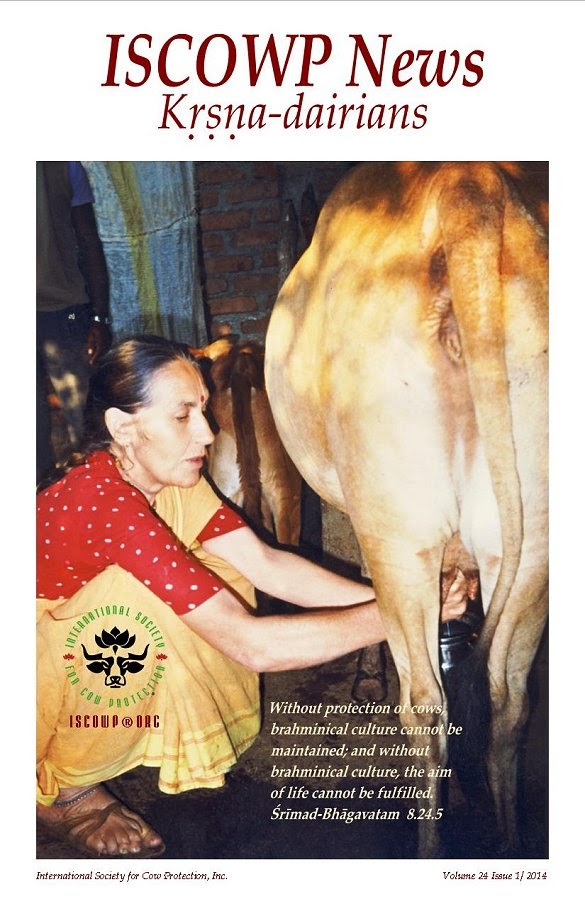
Last month after being asked to give class I spent time studying at the time I was asked if it was possible to comment on the words of Srila Rupa Gosvami regarding dhakti, sadly before giving class my glasses broke and I was unable to read my notes and didn’t cover it. One of the notation’s from Srila Prabhupada was as follows:
The exclusive nature of devotional service has also been described by Śrīla Rūpa Gosvāmī in the Bhakti-rasāmṛta-sindhu (1.1.11):
anyābhilāṣitā-śūnyaṁ jñāna-karmādy-anāvṛtam ānukūlyena kṛṣṇānu-śīlanaṁ bhaktir uttamā
“When first-class devotional service develops, one must be devoid of all material desires, knowledge obtained by monistic philosophy, and fruitive action. The devotee must constantly serve Krishna favorably, as Krishna desires.”
Pure devotees are so exclusive in their intent to serve the Supreme Lord without any reward that they do not accept any kind of liberation, even though it may be offered by the Supreme Lord. This is confirmed in the Śrīmad-Bhāgavatam (3.29.13).
There is also something called “mixed bhakti,” which occurs before the stage of pure devotional service. It is sometimes called prākṛta-bhakti, or devotional service mixed with material desires. Śrīla Prabhupāda writes, “When one has even a tinge of personal interest, his devotion is mixed with the three modes of material nature” (Bhāg. 3.29.9, purport). Thus mixed devotion can occur in various combinations within the modes of ignorance, passion, and goodness. Śrīla Prabhupāda elaborately explains mixed devotion as follows:
Devotional service in the modes of ignorance, passion, and goodness can be divided into eighty-one categories. There are different devotional activities, such as hearing, chanting, remembering, worshiping, offering prayers, rendering service, and surrendering everything, and each of them can be divided into three categories. There is hearing in the mode of passion, in the mode of ignorance, and in the mode of goodness. Similarly, there is chanting in the mode of ignorance, passion, and goodness, etc…. One has to transcend all such mixed materialistic devotional service in order to reach the standard of pure devotional service. [Bhāg. 3.29.10, purport]
One kind of mixed devotional service is known as jñāna-miśra-bhakti, or devotional service mixed with empiric knowledge. Śrīla Prabhupāda writes, “People in general, who are under the influence of avidyā-śakti, or māyā, have neither knowledge nor devotion. But when a person who is a little advanced and is therefore called a jñānī advances even more, he is in the category of a jñāna-miśra-bhakta, or a devotee whose love is mixed with empiric knowledge” (Bhāg. 4.9.16, purport).
Narada Bhakta Sutra 1.9
Over the time I’ve heard of individuals who have left the movement because of problems with devotee’s or quote some incident regarding a devotee or group of devotee’s as a reason to ridicule the movement.
I’ve been pondering this term prak ta-bhakti or service mixed with material desire and how Srila Prabhupada notes how this is devotion mixed by one of the three modes of material nature, my thought is what we see and note is the symptoms of our material conditioning.
We try our best but as we chose this material body we remain under the influence of material nature and thus this influence manifests itself when it comes to our seva. But we are trying to break free from Maya’s clutches and so the greatest privilege is being engaged in devotional seva.
Krishna and the devotee’s are so kind that they engage us nicely and accept what little we have to offer eventually down to this steady engagement we become less influenced by material nature.
In the mean time because of the conditioning our seva may not always be what it should be but I’m sure like me you hope those who see your efforts appreciate this and overlook our weaknesses and failings whilst forgiving any offences.
It occurred to me how kind Krishna and the devotee’s are not expecting us to be pure before doing seva.
It also reminded me that if we want others to show and appreciate our efforts we also have to change our mentality or should I say I have to change, rather than seeing faults seeing the beauty in the seva being done.
It reminded me of the fly and bee analogues and how we need to develop this bee mentality, for in a rubbish dump the bee would only see the one small flower and ignore the rest, whilst the fly even in a beautiful garden will only see the small stool in the garden.
Yes at times we see or hear of event’s when devotees have not quite conducted themselves correctly I know I’m guilty of this but then I’m trying to break free from my material conditioning. As so are many who come into the devotee society so there will at times be difficulty
And this is were we get to develop our compassion for the fallen conditioned soul, we can learn forgiveness and learn to appreciate the beauty of each small act of devotional service.
This was my thoughts whilst reading on this subject but as always what’s your thought’s?
1 May 2014 17:40:44

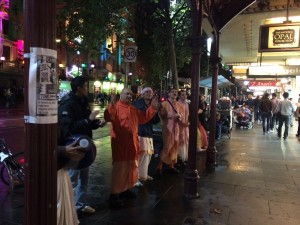
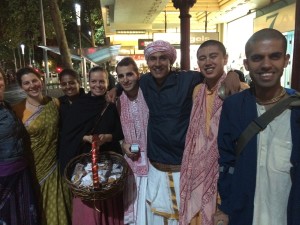
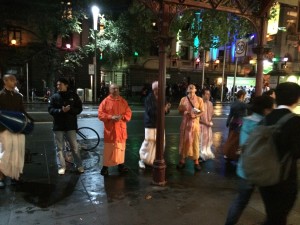
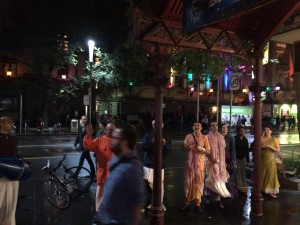








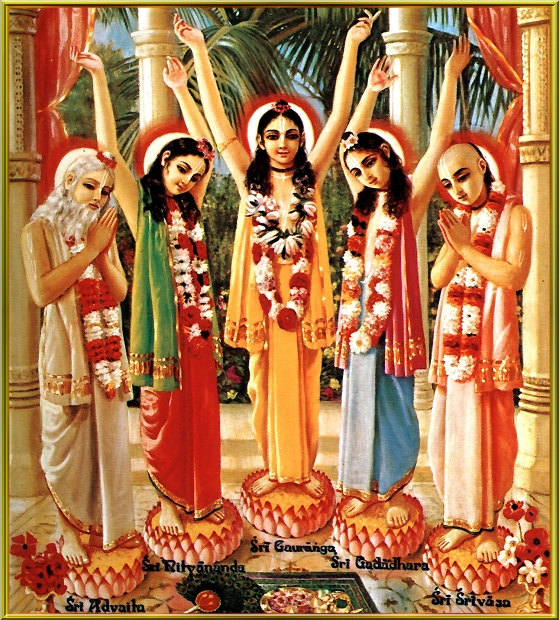 Amazing results were achieved in many preaching projects and activities of Iskcon around the world!
Amazing results were achieved in many preaching projects and activities of Iskcon around the world! 

 The second-largest ISKCON temple in the world, after ISKCON’s headquarters in Mayapur, is set to open in Kanpur on October 3rd, 2014. The festival is expected to draw over 100,000 people including over 500 ISKCON devotees.
Construction on the temple began in October 2011 and will conclude this August. Set on a fifteen-acre site, the elaborate 100,000 square-foot temple, with its majestic towers, will include an open-sky courtyard and large temple hall.
On the temple’s three altars devotees will worship Sri Sri Gaura Nitai, Sri Sri Radha Madhava, and Sri Sri Sita Rama, Lakshman and Hanuman. And wrapping around the building will be a Parikrama marg, or pilgrimage path.
In its first phase of construction, the project will also include a 60,000 square-foot Vedic Ashram, a guest house, Food For Life center, community hall, Bhaktivedanta Youth Academy, gift shop, Govinda’s restaurant, a Goshala housing sixty cows, and a Bhaktivedanta Book Library with a conference hall.
The second-largest ISKCON temple in the world, after ISKCON’s headquarters in Mayapur, is set to open in Kanpur on October 3rd, 2014. The festival is expected to draw over 100,000 people including over 500 ISKCON devotees.
Construction on the temple began in October 2011 and will conclude this August. Set on a fifteen-acre site, the elaborate 100,000 square-foot temple, with its majestic towers, will include an open-sky courtyard and large temple hall.
On the temple’s three altars devotees will worship Sri Sri Gaura Nitai, Sri Sri Radha Madhava, and Sri Sri Sita Rama, Lakshman and Hanuman. And wrapping around the building will be a Parikrama marg, or pilgrimage path.
In its first phase of construction, the project will also include a 60,000 square-foot Vedic Ashram, a guest house, Food For Life center, community hall, Bhaktivedanta Youth Academy, gift shop, Govinda’s restaurant, a Goshala housing sixty cows, and a Bhaktivedanta Book Library with a conference hall.  After Prabhupada chanted "Narayan", there was an eerie silence for about 20 seconds at the end. Finally Prabhupada concludes the lecture saying "Thank you very much". After I heard the pause two or three times, I was convinced Prabhupada went into trance calling the names of Narayana. I wanted to verify my doubt so I did some research online to find if there were any eye witness to this lecture. Lo and behold I found a passage about this encounter by Satyaraja Dasa (Steven Rosen) in his book "The Agni and the Ecstasy".
After Prabhupada chanted "Narayan", there was an eerie silence for about 20 seconds at the end. Finally Prabhupada concludes the lecture saying "Thank you very much". After I heard the pause two or three times, I was convinced Prabhupada went into trance calling the names of Narayana. I wanted to verify my doubt so I did some research online to find if there were any eye witness to this lecture. Lo and behold I found a passage about this encounter by Satyaraja Dasa (Steven Rosen) in his book "The Agni and the Ecstasy".  We originally wanted to make this documentary to start an abrupt filmmaking career with projects planned to follow. Little did we know, Krsna (God) had bigger and better plans for us. We are now living in the ashrams depicted in the video with faith and determination on the path to spiritual advancement.
We originally wanted to make this documentary to start an abrupt filmmaking career with projects planned to follow. Little did we know, Krsna (God) had bigger and better plans for us. We are now living in the ashrams depicted in the video with faith and determination on the path to spiritual advancement. 

